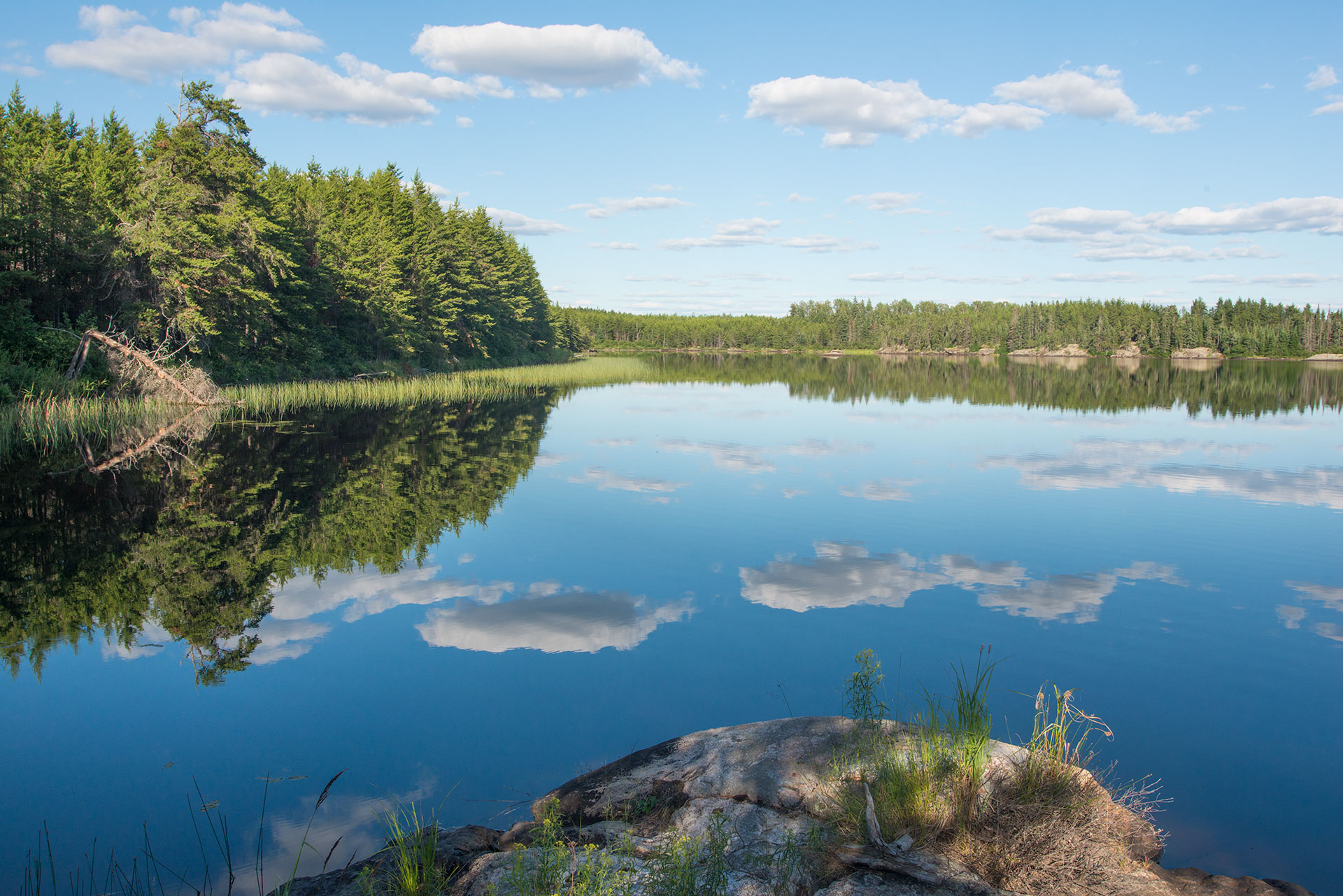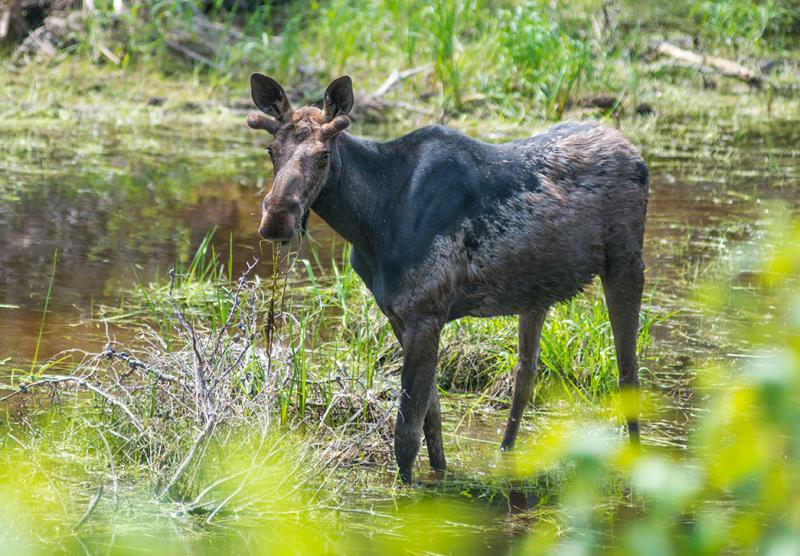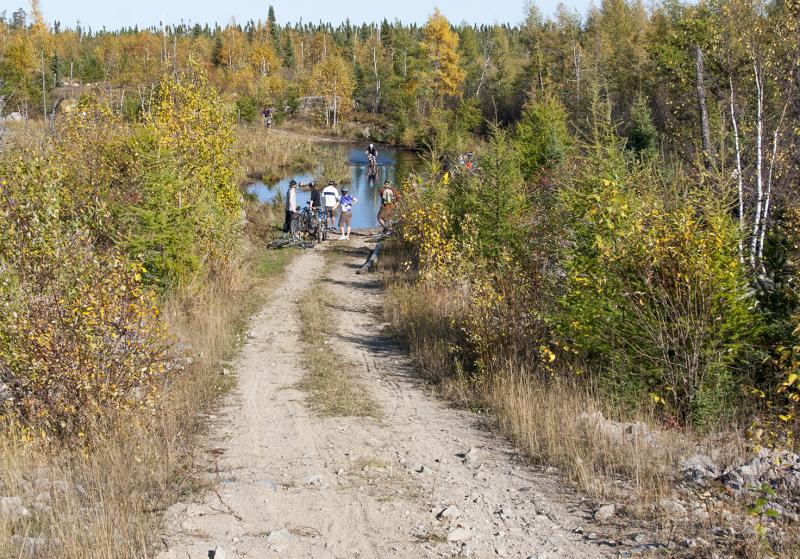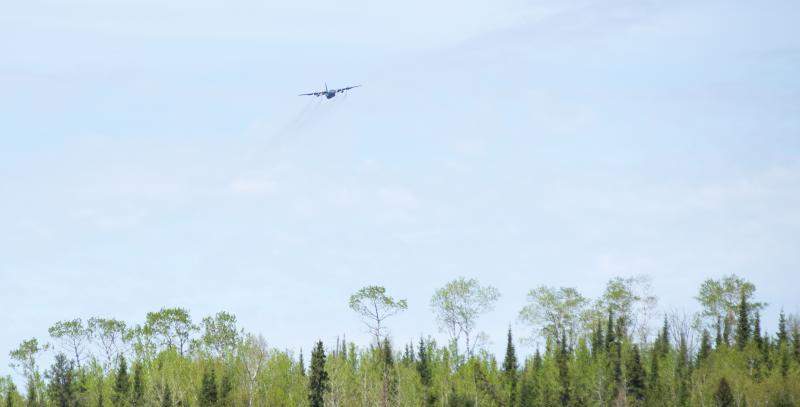
The Draft Management Plan for Nopiming Provincial Park, released in October 2015, has some strong points. But it also reflects some missed opportunities. The points below outline the Wilderness Committee’s support and criticism of guidelines in the plan.
More protected area
The draft plan says the province should pursue protecting more park between Bird Lake and Black Lake (guideline 1).
GOOD: Land south of Bird Lake and North of Tooth Lake also needs to be protected.
Woodland caribou
The draft plan proposes to “assess” adding land to park on west (guideline 2).
NOT GOOD ENOUGH: The Manitoba government’s 2015 Woodland Caribou Recovery Strategy stated land west of Nopiming must be protected for woodland caribou – not just "assessed."
 Moose
Moose
The draft plan states that the multi-stakeholder Moose Management Committee will be consulted, and states generally for moose and caribou that Recovery Strategies and Action Plans will be implemented (guidelines 3-4).
NOT GOOD ENOUGH: Caribou recovery strategies and action plans are required by law already. The government must produce a public moose recovery strategy based upon science rather than socioeconomic considerations. A public action plan for moose will also be needed. It must include fire suppression controls, as well as road removal and effective decommissioning. The moose plan and strategy are the logical formal byproducts of the ongoing Moose Conservation Initiatives. The moose is too important a species to Manitobans, and in too much peril, to do otherwise.
Fire suppression
The draft plan states that there will be an investigation of fire management options that support wildlife management objectives (guideline 6).
NOT GOOD ENOUGH: Fire suppression in the park needs to be limited to infrastructure protection, as opposed to suppressing all fires.
Bigger river buffer zones
The draft plan calls for 150 metre buffers along rivers (guideline 7).
NOT GOOD ENOUGH: Some birds need at least 200 metres, and terrestrial mammals like moose need bigger. Buffers on rivers should be 300 metres.
Springer Lake proposed ecological reserve
The draft plan states that the Tulabi Falls area, which was proposed as an ecological reserve, should be only carefully developed (guideline 8).
OKAY: The Springer Lake area is also a proposed ecological reserve, but it has been left out of the draft plan. The Springer Lake area should be considered for special protection, just as suggested for Tulabi Lake.
 Decommissioning old logging and mining roads
Decommissioning old logging and mining roads
The draft plan states that the Manitoba government should “work towards an inventory of existing roads and trails,” and says “trails that are no longer passable should be removed from the list.” NOT GOOD ENOUGH: Industrial roads in a park need to be removed and strategically decommissioned – not just gated – to make them impassable for vehicle traffic. Roads that are not passable need to be fully decommissioned. For moose and caribou, this is the single biggest step we can take to help stabilize populations.
ATV use
The draft plan states ATVs are only allowed on designated trails (guideline 20).
GOOD: Enforcement of ATV use in the park must be resourced – adequate funding and staff hours are needed.
Boat launches
The draft plan discusses the fact that any new boat launches should minimize impacts (guideline 30).
BAD: No new boat launches are needed. No more roads to lake shores. Wilderness and nature will not react well to increased development.
Non-motorized park activities
The draft plan says the province should look at all options regarding developing and maintaining non-motorized use of the park – hiking, snowshoeing, skiing, winter camping (guidelines 31-34). GOOD.
Cottage lots
The draft plan talks about how new cottage lots will be developed (guidelines 35-37).
BAD: As far back as the 1988 Nopiming Interim Management Guidelines, the province already knew that no more cottages should be developed. No more cottage development in Nopiming is needed. The public park needs to remain public, with temporary use available to all. The wilderness and nature of the park does not need more development like this.
 Military activity
Military activity
The draft plan proposes mitigating concerns around environmental impacts of training sessions (guideline 41).
NOT GOOD ENOUGH: Military exercises are destructive and disruptive. There are flares, gunshots, military vehicles and personnel roaming the forest all day and all night, plus hundreds of locations with hacked down trees, half-burnt vegetation and garbage. The military training must be removed from the park
Commercial developments
The draft plan states that future infrastructure “may be considered in locations that do not negatively impact the experience of other users” (guideline 42). This could include remote commercial facilities, mining camps, access trails, out camps, wild rice leases and commercial boat caches.
NOT GOOD ENOUGH: All new commercial development inside a provincial park should require a Class 2 licence under the Environment Act, so robust public discussion of the merits and detriments of development can be pursued.
Ban mining
The draft plan says nothing about limiting mining, or destructive mineral exploration.
BAD: Mineral exploration is destructive, leaves long-lasting scars and rarely leads to any economic benefit for Manitobans. Mining and mineral exploration in parks needs to be banned. The steps to do so are the following: ban all new mining claims in Nopiming, and put a finite expiry date on all existing claims and leases. It’s that simple.
Boat size restrictions, noise restrictions
The draft plan does not mention motor boat horsepower restrictions, or banning destructive wakeboard boats from the park.
BAD: Lakes inside a wilderness park like Nopiming can not be subjected to destructive wakes from wakeboard boats. Wakeboard boats should be banned in Nopiming, or limited to developed lakes. The peaceful nature should not be disturbed by excessively loud noise from either boat motors or stereos. Noise restrictions should be put in place and enforced.